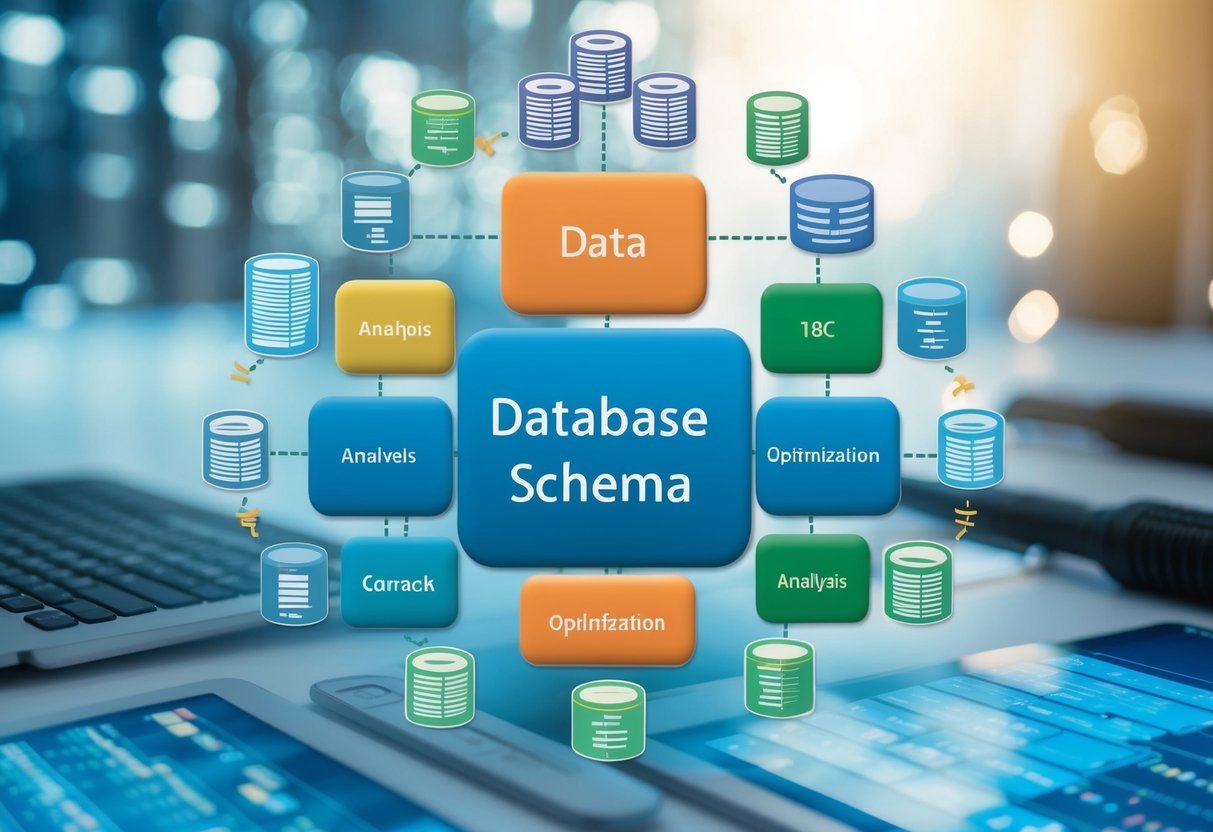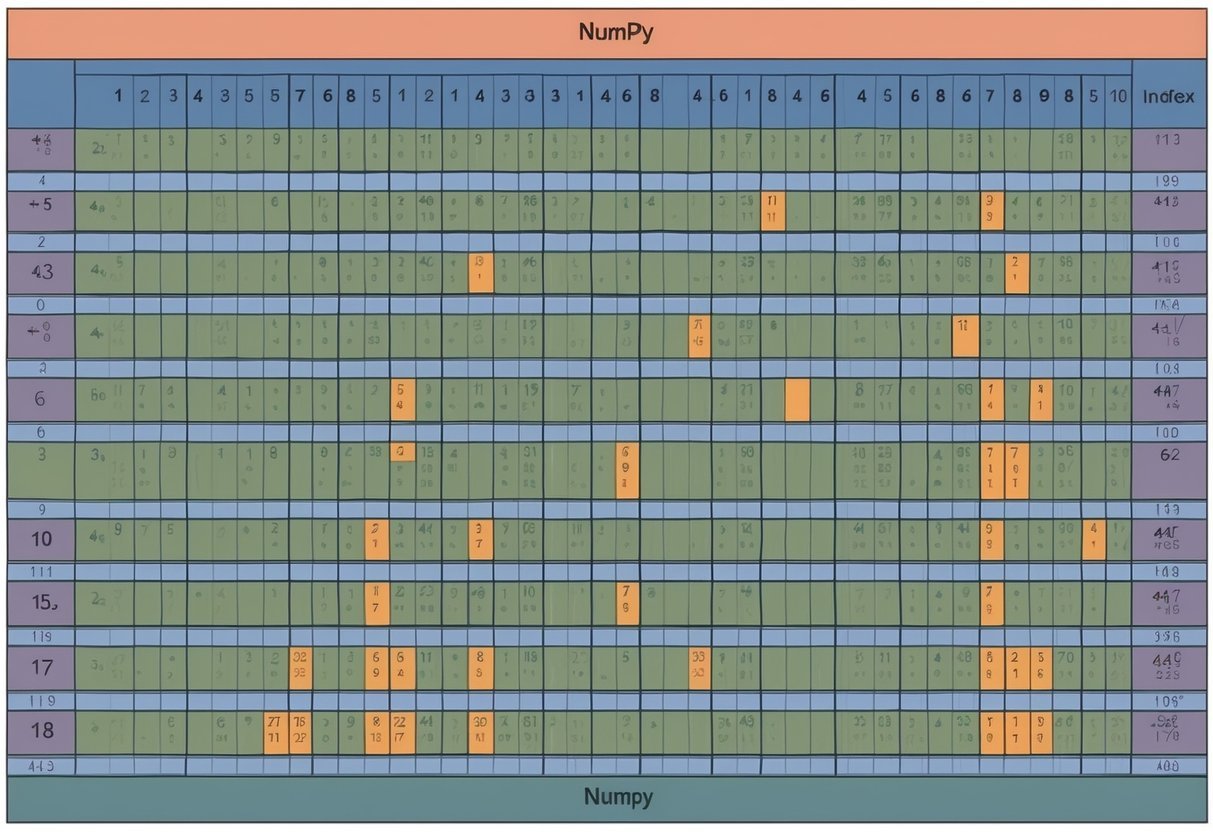Understanding Missing Data
Missing data is a common issue in data science, especially when dealing with real-world datasets. It occurs when certain values or entries in a dataset are absent.
Recognizing and handling missing values is crucial as they can heavily influence the results of data analysis.
There are different types of missing data, each with its characteristics:
-
Missing Completely at Random (MCAR): This occurs when the missing values are entirely random and have no connection to other data in the set. It implies that the likelihood of missingness is the same for all observations.
-
Missing at Random (MAR): Here, the missing data is related to some observed data but not to the missing data itself. For example, survey responders with a specific characteristic may leave some questions unanswered.
-
Missing Not at Random (MNAR): Missing data depends on unobserved data. For example, people might skip answering questions that they find sensitive or personal, leading to a pattern in the missing data.
Understanding the pattern behind missing data helps decide the approach to address it. Whether it’s removing, estimating, or using machine learning models to fill in gaps, the strategy will differ based on the data type and completeness.
For more insights, explore techniques to handle missing values effectively, ensuring data integrity and reliable analysis.
Exploring Data With Python Libraries
Python provides powerful libraries to explore and understand your dataset efficiently. These libraries include Pandas and visualization tools like Matplotlib and Seaborn, which help in identifying missing data and displaying it visually.
Using Pandas to Identify Missing Data
Pandas is a central tool when it comes to data analysis. A Pandas DataFrame is used to organize data in a tabular format, making it easy to analyze.
To find missing data, the .isnull() method is key. This function returns a DataFrame of the same shape, indicating True where values are NaN or None.
Another important function is .info(). It provides a concise summary of the DataFrame, showing non-null entries, dtypes, and memory usage. This overview is helpful in identifying columns with missing data at a glance.
Similarly, the numpy library can work with Pandas to handle missing values. For example, data entries with numpy.nan can be managed seamlessly, ensuring they don’t disrupt your dataset analysis.
Visualizing Missing Data with Matplotlib and Seaborn
For data visualization, both Matplotlib and Seaborn enhance understanding by representing missing data clearly.
Seaborn’s heatmap function can be used to create a visual where missing data points are highlighted, making patterns easy to spot.
Another approach is using Matplotlib to plot a simple bar graph. It can show how many missing entries exist per column, offering a quick comparison across different sections of your data.
These visual tools are invaluable in making complex data more comprehensible. Seeing visual patterns assists in deciding how to handle these gaps, ensuring that future data analysis is accurate and informed.
Strategies for Handling Missing Data
In data analysis, addressing missing values is crucial for building accurate models. Two main approaches include removing incomplete data and filling in missing values using various techniques.
Removal of Data
Removing data with missing values is often the first step analysts consider because it is simple to apply. Functions like dropna() in Python allow users to remove rows or columns with missing entries easily.
This approach works well when the amount of missing data is small and won’t significantly affect the overall dataset.
However, removing data can be risky if too much valuable information is lost. When dealing with large datasets, losing even a small percentage of data can hinder the overall analysis.
Therefore, careful consideration is needed to assess whether removing data is the best strategy based on the specific dataset and project requirements. Analysts often use removal in tandem with other strategies to balance data quality and quantity effectively.
Imputing Missing Values
Imputation is a crucial technique when the goal is to retain as much data as possible. There are multiple methods for imputing missing values, including using the mean, median, or mode of existing data to fill gaps.
The fillna() function in Python is popular for this purpose and allows users to replace missing entries with a chosen imputation method.
Advanced imputation methods involve using predictive models to estimate missing values. Machine learning algorithms can provide more accurate imputations by considering relationships in the data.
While imputation methods vary in complexity, they share the goal of preserving data integrity. The choice of method should fit the model’s needs and the dataset’s characteristics, ensuring reliable and robust analysis results.
Choosing Imputation Techniques
When dealing with missing data in Python, selecting the right imputation technique is crucial. The choice depends on the dataset and its specific characteristics.
Common methods include mean, median, mode, KNN, and iterative imputation, each offering unique advantages.
Mean and Median Imputation
Mean imputation replaces missing values with the average of the non-missing data for a particular feature. This is simple and often used when data is symmetrically distributed.
Median imputation, on the other hand, uses the median value and is better for skewed data as it is less affected by outliers.
Both methods are easy to implement but may not capture data variability well.
Most Frequent and Mode Imputation
Mode imputation involves using the mode, or most frequent value, to fill in missing data. It is particularly effective for categorical data where the mode is clear and dominant.
This method can lead to bias if the mode is not representative of the missing values but provides a straightforward approach when dealing with categorical data.
Using the most frequent value can help in maintaining consistency within categories.
KNN and Iterative Imputation
The KNN imputer analyzes neighboring data points to estimate missing values. It is based on the premise that close data points should have similar values and works well with continuous data.
Iterative imputer is a more advanced method that models each feature with missing values as a function of the other features. This method produces more accurate results by considering correlations within the dataset.
Using techniques like IterativeImputer in scikit-learn can provide robust imputation by leveraging patterns across multiple features.
Advanced Imputation Methods
Advanced imputation methods can handle missing data effectively in machine learning. Among these techniques, Multiple Imputation and Multivariate Imputation are commonly used due to their robust approach to preserving data.
These methods aim to maintain the integrity of datasets for building accurate models.
Multiple Imputation involves creating multiple complete datasets, analyzing each, and then combining the results. This technique provides a more reliable estimation by considering the uncertainty of missing data. It is particularly useful in scenarios with large amounts of missing values.
Multivariate Imputation, often performed using the IterativeImputer from scikit-learn, models each feature with missing values as a function of other features. It updates one feature at a time, improving estimations with each iteration.
Another effective approach is using a regression model for imputation. In this method, a regression algorithm is trained on the observed data to predict and fill in missing values.
This can be particularly useful when the relationships between features are linear.
Imputation techniques vary significantly in complexity and application. For example, Machine Learning Mastery highlights that some methods work by simply replacing missing values with the mean or median, while others use complex algorithms.
These advanced techniques ensure that the data retains its predictive power.
Choosing the right method depends on the data and the problem being solved. Advanced imputation methods are valuable tools in preparing data for analysis and modeling, enabling more accurate predictions.
Dealing with Categorical and Continuous Variables
Handling missing data in datasets requires different strategies for categorical and continuous variables.
Categorical Variables often need methods like imputation or encoding. Imputation can fill missing values with the most frequent category or a new category like “Unknown.”
Another common method is one hot encoding, which transforms categorical values into a binary format that can be used in machine learning models. This often creates several new columns for each category.
Continuous Variables may have missing values filled through methods like mean, median, or mode imputation. In some cases, interpolation or regression techniques are used for more accuracy.
Imputation helps maintain data’s integrity and reduces bias in model training.
The choice of technique depends on the dataset’s nature and the importance of the missing values. It is crucial to analyze each variable type and apply the appropriate strategy.
This ensures that the data remains as close to its original form as possible, allowing for more reliable model predictions.
Data Cleaning in Machine Learning Pipelines
Data cleaning is an essential part of any machine learning pipeline. Ensuring data quality can significantly impact the success of machine learning models. Poor quality data can lead to inaccurate predictions and unreliable results.
Data cleaning involves several steps, including removing duplicate entries, handling missing values, and filtering out irrelevant information.
Handling missing values can be done using methods such as mean imputation or more advanced techniques like Scikit-learn’s IterativeImputer.
Key Steps in Data Cleaning:
-
Identifying Missing Data: Detect missing data points early to decide on appropriate handling methods.
-
Handling Outliers: Outliers can skew data analysis. Techniques like normalization or log-transformations help in managing them effectively.
-
Removing Duplicates: Duplicate entries can inflate data size and mislead model training. Removing duplicates ensures data integrity.
Best Practices:
-
Store Raw Data: Always keep a backup of the original dataset. This helps in comparing changes and preserving important information.
-
Automate Processes: Tools and libraries in Python, such as Scikit-learn, assist in automating repetitive cleaning tasks, making the process efficient.
Data cleaning works as the foundation upon which reliable models are built. By ensuring accuracy and consistency, a well-cleaned dataset enhances the capabilities of any machine learning model, leading to better performance.
Evaluating the Impact of Missing Data on Model Accuracy
Missing data can significantly affect the accuracy of machine learning algorithms. When important information is absent, the model may struggle to make correct predictions. This can lead to biased results and decreased performance.
Different algorithms react to missing data in various ways. For instance, decision trees are more resilient than linear regression models. Nevertheless, any model’s accuracy depends on how well missing data is addressed.
Methods to handle missing data include:
- Deletion (Listwise or Pairwise): Removes incomplete records.
- Imputation Techniques: Replaces missing values with estimated ones. Examples include mean imputation, k-nearest neighbors, and machine learning imputation methods.
Choosing an appropriate strategy is crucial for maintaining model accuracy. Evaluating these strategies involves testing their impact on model performance using metrics such as accuracy scores.
Shadbahr et al. emphasize assessing imputation quality when building classification models. Poor imputation can lead to further inaccuracies, which hampers the overall results.
To evaluate how missing data impacts an algorithm, one must compare the model’s performance with and without the missing values handled. This comparison allows practitioners to identify which imputation method optimally maintains model accuracy. Understanding this impact helps in selecting the most suitable approach for any given dataset.
Using Imputation Libraries in Python
Handling missing data is crucial in any data preprocessing step. Python offers several powerful libraries to tackle this issue.
Pandas is a common choice for many. It provides functions like fillna() and interpolate() to replace missing values. Users can fill gaps with mean, median, or a forward fill.
Another robust library is Scikit-learn. It includes tools like the SimpleImputer and IterativeImputer that allow imputing data efficiently. These tools can fill missing values with statistical methods like mean or median.
KNNImputer is also part of Scikit-learn and handles missing data by considering the nearest neighbors. This approach can be more accurate as it uses similar data points for estimation. Learn more about its usage from GeeksforGeeks.
XGBoost is another advanced tool. It handles missing data internally during model training. This makes it a convenient choice when working with datasets that have gaps.
Here’s a quick comparison of methods:
| Library | Method | Description |
|---|---|---|
| Pandas | fillna() | Replace with a specific value or method |
| Scikit-learn | SimpleImputer | Fill with mean, median, etc. |
| Scikit-learn | IterativeImputer | Model-based predictions |
| Scikit-learn | KNNImputer | Nearest neighbor approach |
These libraries provide flexibility, enabling users to choose the most fitting method for their dataset.
Practical Application: Case Studies and Real-world Datasets
Understanding how to handle missing data is essential for data scientists. One popular resource for practicing these skills is the Titanic dataset, available on Kaggle. This dataset contains information about passengers and includes missing values that offer a real-world challenge for data cleaning and analysis.
Working with real-world datasets, such as those on Kaggle, allows learners to apply data cleaning techniques. These datasets often have missing values and can be used to practice various imputation methods. This hands-on approach is crucial for developing practical skills.
Case studies, like those found in Open Case Studies, provide learners with valuable opportunities to face real-world data challenges. These studies emphasize handling messy data, which is common in the field of data science. They highlight strategies to manage and analyze incomplete data effectively.
Maintaining Data Integrity Post-Imputation
Imputation is a useful technique to handle missing data, but it’s important to ensure data integrity after applying these methods. Without careful consideration, imputed values can introduce biases or inaccuracies into a dataset.
After imputation, it is essential to verify that no data corruption occurred during the process. This involves checking for unusual patterns or inconsistencies in the data, which might suggest errors introduced during imputation.
Conducting statistical analyses is crucial. These analyses help in comparing the dataset before and after imputation. Mean, median, and standard deviation should remain reasonably close post-imputation if the imputation was done correctly.
Data integrity also requires maintaining transparency about changes made to the dataset. Keeping track of which values were imputed and the methods used can help in future audits or analyses. One way to do this is by creating a log or a separate metadata file indicating these changes.
When imputed data is used in predictive models, it is wise to test the model’s performance with both imputed and non-imputed data. This helps in identifying any shifts in model accuracy, which might signal potential data issues.
Optimizing the Data Collection Process
An efficient data collection process is key to reducing missing data. Ensuring questionnaires and forms are clear and concise helps gather complete information. Training data collectors to follow guidelines and document inconsistencies can improve data quality.
Automating data entry can minimize errors. Using electronic data capture systems reduces manual input mistakes and increases accuracy. Software options with built-in validation checks ensure data completeness.
Incorporating data mining techniques can identify patterns or gaps in raw data. These insights help refine the collection process. By understanding what information tends to be incomplete, adjustments can be made to capture more accurate data initially.
Regularly reviewing and updating data collection tools keeps the process effective. Feedback loops between data users and collectors can help address issues promptly. Consistent updates ensure alignment with changing data needs.
Collaborating with multiple departments aids in gathering comprehensive data. It encourages shared best practices and reduces redundancy in data collection efforts. Each team brings unique insights to improve the overall process.
Frequently Asked Questions
Handling missing data efficiently in Python involves understanding different methods and tools. These include techniques for imputation, detection, and visualization of missing values. Proper management of outliers and strategies for large datasets are also crucial.
What are the steps to perform missing value imputation in Python using Pandas?
To perform missing value imputation using Pandas, first import the library. Then, identify missing values using functions like isnull() or notnull(). After identifying the gaps, you can fill them using methods such as fillna(), which replaces missing data with specified values or averages.
How can one detect missing values in a DataFrame?
Detecting missing values in a DataFrame involves using functions like isnull() or notnull(), which return a DataFrame of the same size with Boolean values. Use sum() with isnull() to get the total count of missing values in each column. This simplifies identifying missing data locations.
What methods are available for handling missing data in a Python dataset?
Several methods exist for handling missing data in Python datasets. Simple techniques involve removing rows or columns with missing values using dropna(). Advanced techniques include single or multiple imputation, where estimates replace missing entries. Each method has its pros and cons based on the dataset size and missing data extent.
Can you explain how to manage outliers and missing values simultaneously in Python?
Managing outliers and missing values simultaneously involves first inspecting the data for irregularities. Use describe() to get an overview of data distribution. Outliers can distort imputation processes, so treat them appropriately, possibly by using robust models or transforming values before addressing missing data with methods like fillna().
What are the best practices for dealing with large amounts of missing data in a dataset?
For large datasets with missing data, start by analyzing the extent of the missingness. Missing data visualization tools like matplotlib can help. Use scalable data storage and processing systems such as NumPy or Data Cleaning and Analysis techniques that handle large datasets efficiently while maintaining data integrity.
How can missing data be visualized in Python to better understand its impact?
Visualizing missing data can be done using libraries like matplotlib or seaborn.
Use heatmap() from Seaborn to visualize the presence of missing data, where missing values are highlighted to give a clear picture of patterns within the dataset.
Such visuals help understand the impact and guide further data cleaning efforts.









































